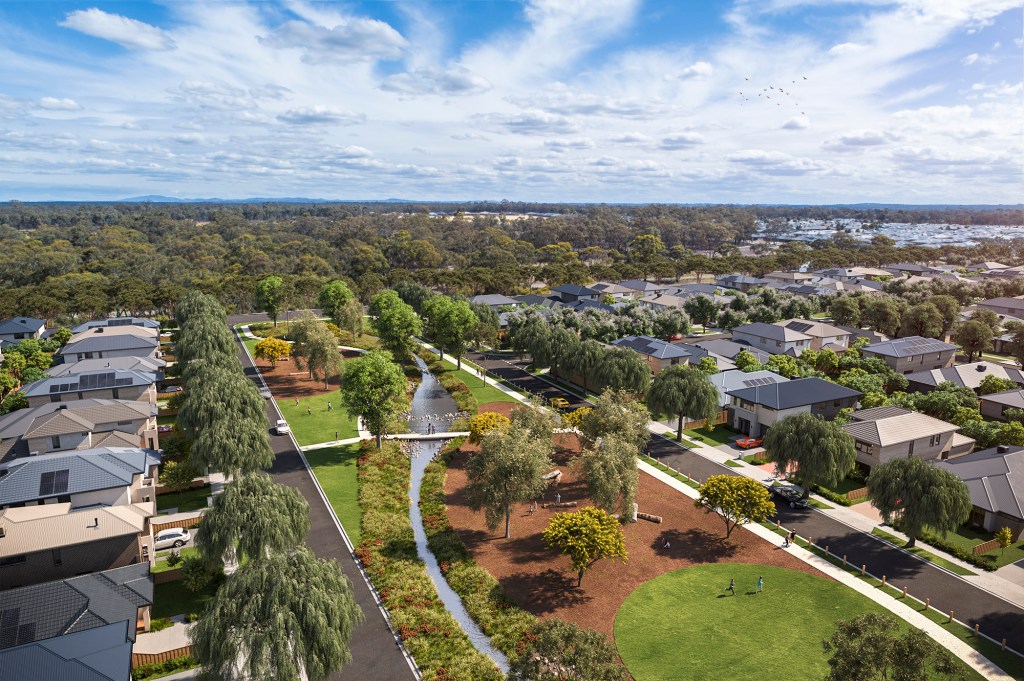While Australia’s land development industry is set for a 4.9% contraction this year, Andrew Welsh, ex-AFL footballer and founder of property development firm Wel.Co says the country’s growth corridors present a significant investment opportunity.
This article was featured in Issue 10 of Forbes Australia. Tap here to secure your copy.

In a previous life, property developer Andrew Welsh kicked 32 goals for Essendon in his decade-long stint for the Victorian AFL club. Today, through his property development firm, Wel.Co, Welsh is trying to kick goals through Australia’s growth corridors instead.
Wel.Co has a $2 billion pipeline of some 10,000 lots across Victoria, South Australia and Queensland – a sizeable bite of Australia’s growing land development industry, which brings in about $17.5 billion in annual revenue, according to IbisWorld.
Welsh, who played 162 games for Essendon before retiring in 2011, took an interest in the property business while still on the football field, spending his days off reaching out to Essendon’s network of property folk. One of those was Paul Little, the managing director of Toll Holdings; another was Metricon owner Mario Biasin.
“In my time at Essendon, I got to meet some really successful men and women in the property industry that I could catch up for a coffee with and get years of experience in half an hour,” he says. “Family members, friends, mentors – they were all involved in the property industry. It was naturally somewhere I was always going to stray towards.”
With more job opportunities and the lifestyle that South Australia presents, it’s pretty compelling for people to relocate.
Andrew Welsh, founder, Wel.Co
Since its inception, Welsh has amassed a personal fortune of $254 million, according to media reports. But it all started with a 1000-hectare lot in Melbourne’s west that he purchased in 2011. After a six-year re-zoning process, that became Wel.Co’s debut project, Thornhill Park. In the years since, Wel.Co has continued to secure large development projects by working with landowners – and genuinely enjoying the gig.
“There’s every reason we didn’t need to make partnerships with landowners and look at opportunities in new areas, but we’ve gotten good at looking at sites and how we can maximise returns there,” he says. “We just love what we do.”
In 2022, it secured the rights to develop a $400 million housing estate and marina on the Murray River in Renmark after an eight-month negotiation process. It’s hoped that the marina will contribute about $109 million a year to the local economy once completed. Welsh says the South Australian government is continuing to boost the industry by opening up new growth areas for affordable housing.
“With more job opportunities and the lifestyle that South Australia presents, it’s pretty compelling for people to relocate,” he says.
“Adelaide’s done well from a market perspective, and it’s certainly outperforming a lot of other markets around the country. Sales and construction are going very well. We just launched one in Mallala and sold 12 in a few weeks. You can get some really affordable lots into the market, which helps first-home buyers get into something that probably seemed unachievable.
But while South Australia is gaining momentum, Welsh says he fears for Melbourne growth corridors, with sales down in the last 12 months and changes in planning policy slowing down further re-zoning.
“The Victorian Government is focusing more on inner-ring development, rather than growth area development,” Welsh says.
“Ultimately, we’re seeing that it’s pushing people to other states. We have projects in Queensland and South Australia, so we can see where inquiry is coming from, and a lot of it is Melbourne residents looking to move where it’s affordable.”

Research shows that the volume of greenfield land sales for residential projects more than doubled from a low in 2018-19 to a peak in 2020-21 in response to the Federal Government’s HomeBuilder stimulus and historically low-interest rates. However, the end of this stimulus and rising mortgage interest rates since 2021-22 have led to an expected contraction in industry revenue (5.5% annually over the five years through 2023-24).
There’s an expected contraction of 4.9% this year, and Welsh is buckling down for a tough six months.
“There are challenges around subcontractors, supply, price increases, availability of materials – it’s been extremely challenging for them to navigate,” he says.
Between July 2022 and April 2023, 1,709 construction companies across Australia entered administration, according to data from ASIC. While Wel.Co doesn’t engage in construction directly, the pinch on construction affects the company’s prospective buyers, Welsh says.
“In the first-and-second-home buyer market, you need to be instilling confidence through your land developer, through your builder, but it’s difficult to do that because a lot of that’s been out of their control. It’s been hard to provide absolute confidence to buyers on what they’re going to be paying for their home at the end of the day. I think that’s settled down a little bit now, and a lot of these pressures have come out of the market.”
And then there’s the uncertainty around interest rates and rising cost of living pressures. “Any interest rate rise hurts us because, again, when you’re in growth corridors, you’re focusing on that affordable market,” he says.

But despite rising rates, Australia has come in at 18 of 56 countries worldwide regarding house price growth in 2023, with prices up 4.9%, according to Knight Frank research.
It was one of 35 markets to experience house price growth even with higher debt costs. Knight Frank’s head of residential research, Michelle Ciesielski, attributed the country’s resilience to limited available stock, strong employment, and robust wage growth.
Focusing the lens on Australian major cities in 2024, housing values rose 0.6% in February alone, up from a 0.4% rise in January, according to property analytics firm CoreLogic. It’s the strongest monthly gain since October 2023, with each capital city recording a lift (bar Hobart, which experienced a decline of 0.3%). The national median dwelling value is now $765,762, up nearly 9% on February last year.
“Last years’ rate hikes clearly dented capital gains, but higher interest rates haven’t been enough to extinguish growth entirely,” CoreLogic’s research director, Tim Lawless, says.
“The shortfall of housing supply relative to housing demand continues to place upward pressure on home values across most regions.”
And migration is another tailwind. Regional population data released in 2023 shows nearly 103,000 people moved to regional Australia. Greater Melbourne increased by 55,000, Greater Queensland by 59,200 and Greater Adelaide by 16,100.
“Although this year’s going to be tough, I think the growth areas in the markets we’re in are going to perform well post the end of this year, purely around affordability and migration,” Welsh says.
“Looking at the number of migrants coming into the country and where they choose to live, I think it caters to the growth corridors we’re targeting.”
The developer says there’s also a lot of inquiry from commercial businesses about when town centres are set to be delivered in growth corridors, which is a drawcard for prospective residents.
“There’s a lot more interest, and it’s positive because it shows that there are going to be some immediate amenities to these growth corridors, which helps people buy confidently in these areas.”
Look back on the week that was with hand-picked articles from Australia and around the world. Sign up to the Forbes Australia newsletter here or become a member here.



